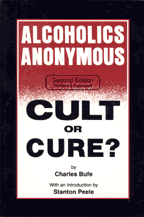
This is the bibliography from our upcoming release, The Anarchist Cookbook, by Keith McHenry with Chaz Bufe, introduction by Chris Hedges (October 2015).
For decades, anarchists have talked about publishing a real anarchist cookbook–a book that accurately reflects its title, a book with recipes for social change and tasty food, and accurate information on anarchism–but no one has produced one. Until now. Here’s its bibliography. It’s not meant to be comprehensive; it’s intended only as a jumping off point for further study.
(Sorry about the lack of capitalization of the book titles. The formatting did not transfer with the text.)
Anarchism
Antliff, Allan. Only a Beginning: An Anarchist Anthology. Vancouver, BC: Arsenal Pulp Press, 2004.
Avrich, Paul. Anarchist Portraits. Princeton, NJ: Princton University Press, 1988.
Bakunin, Michael.God and the State. New York: Dover, 1970.
Bakunin, Michael. Marxism, Freedom and the State. London: Freedom Press, 1984.
Berkman, Alexander. What Is Anarchism? Oakland: AK Press, 2003.
Bookchin, Murray. Post-Scarcity Anarchism. Oakland: AK Press, 2004.
Bookchin, Murray. Remaking Society. Cambridge, MA: South End Press, 1990.
Brinton, Maurice. Toward Workers Power. Oakland: AK Press, 2004.
Chomsky, Noam. On Anarchism. New York: New Press, 2013.
Dark Star Collective (eds.) Quiet Rumours: An Anarcha-Feminist Reader, New Edition. Oakland: AK Press, 2012.
Dolgoff, Sam (ed). Bakunin on Anarchy. New York: Knopf, 1972.
Ehrlich, Howard and a.h.s. boy (eds.). The Best of Social Anarchism. Tucson, AZ: See Sharp Press, 2013.
Ehrlich, Howard (ed.). Reinventing Anarchy Again. Oakland: AK Press, 2001.
Fabbri, Luigi. Bourgeois Influences on Anarchism. Edmonton, Alberta: Thoughtcrime Ink, 2010.
Fernández, Frank. Cuban Anarchism: The History of a Movement. Tucson, AZ: See Sharp Press, 2001.
Flores Magón, Ricardo (Mitchell Verter and Chaz Bufe, eds.). Dreams of Freedom: A Ricardo Flores Magón Reader. Oakland: AK Press, 2005.
Goldman, Emma. Anarchism and Other Essays. New York: Dover, 1969.
Goldman, Emma. Living My Life (volumes 1 & 2). New York: Dover, 1970.
Guerin, Daniel. Anarchism: From Theory to Practice. New York: Monthly Review, 1996.
Kropotkin, Peter. Anarchism and Anarchist Communism. London: Freedom Press, 1987.
Kropotkin, Peter. The Conquest of Bread. New York: Dover, 2011.
Kropotkin, Peter. Fields, Factories and Workshops Tomorrow. New York: Harper Torchbooks, 1974.
Kropotkin, Peter. Mutual Aid. Boston, Porter-Sargent, n.d.
Kroptkin, Peter. Kropotkin’s Revolutionary Pamphlets. New York: Dover, 1970.
Malatesta, Errico. Anarchy. London: Freedom Press, 1984.
Marshall, Peter. Demanding the Impossible: A History of Anarchism. Berkeley, CA: PM Press, 2010.
Mbah, Sam and Igariwey, I.E. African Anarchism: The History of a Movement. Tucson, AZ: See Sharp Press, 1997.
Meltzer, Albert. Anarchism: Arguments For & Against. Edinburgh: AK Press, 1996.
Richards, Vernon (ed.). Life and Ideas: The Anarchist Writings of Errico Malatesta. Berkeley, CA: PM Press, 2015.
Rocker, Rudolf. Anarchism and Anarcho-Syndicalism. London: Freedom Press, 1988.
Rocker, Rudolf. Anarcho-Syndicalism: Theory and Practice. Oakland: AK Press, 2004.
Rooum, Donald. What Is Anarchism? London: Freedom Press, 1992.
Ward, Colin. About Anarchism. London: Freedom Press, 2002.
Ward, Colin. Anarchism: A Very Brief Introduction. Oxford: Oxford University Press, 2004.
Ward, Colin. Anarchy in Action. London: Freedom Press, 1992.
Woodcock, George. Anarchism. Toronto: University of Toronto Press, 2004.
Anarchist Science Fiction
Banks, Iain M. The Player of Games,. New York: Orbit, 1988.
Banks, Iain M. Matter. New York: Orbit, 2008.
Banks, Iain M. Surface Detail New York: Orbit, 2010.
Carlsson, Chris. After the Deluge. San Francisco: Full Enjoyment Books, 2004.
Danvers, Dennis. The Fourth World. New York: Avon, 2000.
Harrison, Harry. The Stainless Steel Rat Gets Drafted. New York: Bantam, 1987.
Hogan, James P. Voyage from Yesteryear. New York: Doubleday, 1982.
LeGuin, Ursula. The Dispossessed.New York: Harper, 1974.
Macleod, Ken. The Stone Canal. New York: Tor, 1996.
Macleod, Ken. The Cassini Division. New York: Tor, 1998.
Oakley, Nicholas P. The Watcher. Tucson: See Sharp Press, 2014.
Rucker, Rudy. Software. New York: Eos, 1987.
Rucker, Rudy. Wetware. New York: Eos, 1988.
Rucker, Rudy. Freeware. New York: Eos, 1997.
Stross, Charles. Neptune’s Brood. New York: Ace, 2014.
Teflon, Zeke. Free Radicals: A Novel of Utopia and Dystopia. Tucson: See Sharp Press, 2012.
Wilson, Robert Anton and Shea, Bob. The Illuminatus Trilogy. New York, Dell, 1975.
Art & Anarchism
Antiff, Allan. Anarchist Modernism: Art, Politics, and the First American Avant-Garde. Chicago: University of Chicago Press, 2007.
Antiff, Allan. Anarchy and Art: From the Paris Commune to the Fall of the Berlin Wall. Vancouver, BC: Arsenal Pulp Press, 2007.
Harper, Clifford. The Education of Desire: The Anarchist Graphics of Clifford Harper. London: Anarres, 1984.
Harper, Clifford. Anarchy: A Graphic Guide. London: Camden Press, 1987.
Kinney, Jay. Anarchy Comics: The Complete Collection. Oakland: PM Press, 2012.
Rooum, Donald. Wildcat: Anarchist Comics by Donald Rooum. London: Freedom Press, 1985.
Rooum, Donald. Wildcat: Twenty Year Millenium, A selection celebrating 20 years of Wildcat appearances in Freedom newspaper. London: Freedom Press, 1999.
Weire, David. Anarchy and Culture: The Aesthetic Politics of Modernism. Amherst, MA: University of Massachusettes Press, 1997.
Cookbooks
Calvo, Luz. Decolonize Your Diet: Plant-Based Mexican-American Recipes for Health and Healing.Vancouver, BC: Arsenal Pulp Press, 2013.
Chef AJ. Unprocessed: How to achieve vibrant health and your ideal weight, Los Angeles: CreatSpace, 2011.
Goldhammer, Alan. The Health Promoting Cookbook. Summertwon, TN: Book Publishing Co., 1997.
Hagler, Louise and Bates, Dorothy. The New Farm Vegetarian Cookbook.Summertown, TN: Book Publishing Co., 1988
Kalper, Michael A. The Cookbook for People Who Love Animals. Kapa’au, HI: Gentle World, 1981.
Katzen, Mollie. The Enchanted Broccoli Forest, Mollie Katzen, Berkeley, CA: Ten Speed Press, 1995
Katzen, Mollie. Moosewood Cookbook. Berkeley, CA: Ten Speed Press,, 2000
Kloss, Jethro. Back to Eden. Santa Barbara: Woodbridge Press, 1972.
Moskowitz, Isa Chandra. Vegan with a Vengeance: Over 150 Delicious, Cheap, Animal-Free Recipes That Rock, Cambridge, MA: Da Capo Press, 2005
Robertson, Laurel. Laurel’s Kitchen: A Handbook for Vegetarian Cookery and Nutrition. Berkeley, CA: Nilgiri Press, 1971.
Shurtleff, William. The Book of Miso. New York: Ballantine, 1976.
Thomas, Ann. The Vegetarian Epicure. New York: Vintage, 1972
Direct Action
Beck, Julian. The Life of the Theatre. San Francisco: City Lights Books, 1972.
Billboard Lieration Front. The Art & Science of Billboard Improvement. Tucson: See Sharp Press, 2000.
Boyle, Francis. Defending Civil Resistance Under International Law. Dobbs Ferry, NY: Transnational Publishers, 1987.
Crimethinc. Recipes for Disaster:An Anarchist Cookbook. Salem, OR: Crimethinc, 2005
DAM Collective. Earth First! Direct Action Manual. Earth First!, 1997.
Flynn, Elisabeth G. and Smith, Walker C. Direct Action and Sabotage! Chicago: IWW, 1991.
Foreman, Dave (ed.). Ecodefense: A Field Guide to Monkeywrenching. Chico, CA: Abbzug Press, 1993.
Hedemann, Ed. (ed.). War Resisters League Organizers Manual. New York: War Resisters League, 1981.
Lane, James H. Direct Action and Desegregation 1960–1962: Towards a Theory of the Rationalization of Protest. Brooklyn, NY: Carlson Publishers, 1989.
Thoreau, Henry David. Walden and Civil Disobedience. New York: Signet, 2012.
Economics
Albert, Michael. Looking Forward: Participatory Economics for the Twenty First Century. Boston: South End, 1999.
Albert, Michael. Of the People, By the People: The Case for a Participatory Economy. Oakland: AK Press, 2001.
Albert, Michael. Parecon: Life After Capitalism. New York: Verso, 2004.
Albert, Michael. Thinking Forward: Learning To Conceptualize Economic Vision. Winnipeg: Arbeiter Ring, 1997.
Alperovitz, Gar. America Beyond Capitalism: Reclaiming Our Wealth, Our Liberty, and Our Democracy, 2nd Edition. Boston: Democracy Collaborative Press/Dollars and Sense, 2011.
Alperovitz, Gar. What Then Must We Do?: Straight Talk about the Next American Revolution. White River Jct., Vermont: Chelsea Green, 2013.
Hahnel, Robin. Of the People, By the People: The Case for a Participatory Economy. Oakland: AK Press, 2012.
Hahnel, Robin. The ABCs of Political Economy: A Modern Approach. London: Pluto Press, 2015.
Hahnel, Robin and Wright, Erik Olin. Alternatives to Capitalism: Proposals for a Democratic Economy. New Left Project, 2014.
Wolff, Richard. Capitalism Hits the Fan: The Global Economic Meltdown and What to Do About It. Northampton, MA: Interlink, 2013.
Wolff, Richard. Democracy at Work: A Cure for Capitalism. Chicago: Haymarket Books, 2012.
Wolff, Richard. Occupy the Economy: Challenging Capitalism. San Francisco: City Lights, 2012.
Zweig, Michael. The Working Class Majority. Ithaca, New York: ILR Press, 2011.
Environment
Bertell, Rosalie. No Immediate Danger: Prognosis for a Radioactive Earth. Summertwon, TN: Book Publishing Co., 2000.
Bertell, Rosalie. Planet Earth: The Latest Weapon of War. London: Quartet Books, 2002.
Carson, Rachel. Silent Spring. New York: Mariner Books, 2002.
Hartmann, Thom. The Last Hours of Ancient Sunlight: Revised and Updated: The Fate of the World and What We Can Do Before It’s Too Late. New York: Three Rivers Press, 2004.
Leopold, Aldo. A Sand County Almanac: Outdoor Essays & Reflections. New York: Ballantine Books, 1986.
McKibben, Bill. End of Nature. New York: Random House, 2006.
McKibben, Bill. Earth: Making a Life on a Tough New Planet. New York: Times Books, 2010.
Tokar, Brian. Redesigning Life?: The Worldwide Challenge to Genetic Engineering. London: Zed Books, 2001.
Tokar, Brian. Gene Traders: Biotechnology, World Trade, and the Globalization of Hunger. Burlington, VT: Toward Freedom, 2004.
Tokar, Brian and Eiglad, Erik. Toward Climate Justice. Porsegrunn, Norway: Communalism Press, 2010.
Food Politics
Aoki, Keith. Seed Wars: Cases and Materials on Intellectual Property and Plant Genetic Resources. Druham, NC: Carolina Academic Press, 2007.
Bello, Walden. The Food Wars. London, Verso, 2009.
Berry, Wendell. The Unsettling of America: Culture and Agriculture. San Francisco: Sierra Club, 1986.
Blood Root Collective. The Political Palate. Bridgeport, CT: Sanguinaria Publishing, 1980.
Boyd, Billy Ray. For The Vegetarian in You. San Francisco: Taterhill Press, 1987.
Collins, Joseph. Food First. New York: Ballantine, 1977.
Collins, Joseph. World Hunger: Twelve Myths. New York: Grove Press, 1986.
Cribb, Julian. The Coming Famine: The Global Food Crisis and What We Can Do to Avoid It, Berkeley, CA: University of California Press, 2010.
Gottlieb, Robert. Food Justice: Food, Health, and the Environment. Cambridge, MA: MIT Press, 2010.
McHenry, Keith. Hungry for Peace: How You Can Help End Poverty and War with Food Not Bombs. Tucson: See Sharp Press, 2012.
Katz, Sandor Ellix. The Revolution Will Not Be Microwaved: Inside America’s Underground Food Movements. White River Jct., VT: Chelsea Green, 2006.
Lappé, Frances Moore. Diet for a Small Planet. New York: Random House, 1991.
Nestle, Marion. Food Politics: How the Food Industry Influences Nutrition and Health. Berkeley, CA: University of California Press, 2002.
Patel, Raj. Stuffed and Starved: The Hidden Battle for the World Food System. Brooklyn, NY: Melville House, 2008.
Pollan, Michael. The Omnivore’s Dilemma: A Natural History of Four Meals. New York: Penguin Press, 2006.
Robbins, John. Diet for a New America. Novato, CA: H.J. Kramer, 1998.
Robbins, John. The Food Revolution: How Your Diet Can Help Save Your Life and Our World. Newbury Port, MA: Conari Press, 2001.
Schlosser, Eric. Fast Food Nation. New York: Houghton Mifflin, 2002.
Shiva, Vandana. The Hijacking of the Global Food Supply. Boston: South End Press, 2007.
Shiva, Vandana (ed). Manifestos on the Future of Food and Seed. Boston: South End Press, 2007.
Shiva, Vandana. Soil Not Oil. Boston: South End Press, 2008
Sinclair, Upton. The Jungle: The Uncensored Original Edition. Tucson: See Sharp Press, 2003.
Tokar, Brian and Magdoff, Fred. Agriculture & Food in Crisis: Conflict, Resistance and Renewal. New York: Monthly Review Press, 2010.
Tuttle, Will. The World Peace Diet, Eating For Spiritual Health And Social Harmony. New York: Lantern Books, 2005.
Wolfe, David. Superfoods: The Food and Medicine of the Future. Berkeley, CA: North Atlantic Books, 2009.
Gardening
Bartholomew, Mel. All New Square Foot Gardening, Second Edition: The Revolutionary Way to Grow More In Less Space. Minneapolis: Cool Springs Press, 2013.
Brookbank, George. The Desert Gardener’s Calendar: Your Month-by-Month Guide. Tucson: University of Arizona Press, 1999.
Brookbank, George. Desert Gardening: The Complete Guide. Boston: Da Capo Press, 1991.
Coburn, Heather. Food Not Lawns: How to Turn Your Yard into a Garden and Your Neighborhood into a Community. White River Jct., VT: Chelsea Green, 2010.
Fell, Derek. Vertical Gardening: Grow Up, Not Out, for More Vegetables and Flowers in Much Less Space. Emmaus, PA: Rodale, 2011.
Fukuoka, Masanobu. The One-Straw Revolution: An Introduction to Natural Farming. New York: NYRB Clasics, 2008.
Logsdown, Gene. Holy Shit: Managing Manure To Save Mankind. White River Jct., VT: Chelsea Green, 2010.
Markham, Brett. Mini Farming: Self-Sufficiency on 1/4 Acre. New York: Skyhorse Publishing, 2010.
Madigan, Carleen. The Backyard Homestead: Produce all the food you need on just a quarter acre! North Adamas, MA: Storey, 2009.
Nyhuis, Jane. Desert Harvest: A Guide to Vegetable Gardening in Arid Lands. Tucson: Growing Connections, 1982.
Owens, David. Extreme Gardening: How to Grow Organic in the Hostile Deserts. Phoenix: Poco Verde, 2000.
Smith, Edward. The Vegetable Gardener’s Bible. North Adams, Massachusetts: Storey Publishing, 2009.
Wilson, Peter Lamborn and Weinberg, Bill (eds). Avant Gardening Ecological Struggles in the City & the World. New York: Autonomedia, New York,1999.
Labor
Boyer, Richard and Marais, Herbert. Labor’s Untold Story. UE, 1979.
Brecher, Jeremy. Strike! (exp. ed.). Oakland: PM Press, 2014.
Brinton, Maurice. For Workers’ Power. Oakland: AK Press, 2004.
Lynd, Staughton. Doing History from the Bottom Up: On E.P. Thompson, Howard Zinn, and Rebuilding the Labor Movement from Below. Chicago: Haymarket, 2014.
Ness, Immanuel. New Forms of Worker Organization: The Syndicalist and Autonomist Restoration of Class-Struggle Unionism. Oakland: PM Press, 2014.
Ness, Immanuel and Azzellino, Dario (eds.). Ours to Master and to Own: Workers’ Control from the Commune to the Present. Chicago: Haymarket, 2011.
Pannekoek, Anton. Workers’ Councils. Oakland: AK Press, 2002.
Thompson, Fred and Bekken, Jon. The Industrial Workers of the World: Its First 100 Years. Chicago: IWW, 2006.
Nonviolence
Cohen, Tom. Three Who Dared. New York: Avon, 1971.
Gandhi, Mohandas. Gandhi An Autobiography: The Story of My Experiments With Truth. Boston: Beacon Press, 1993.
Gandhi, Mohandas. The Essential Gandhi: An Anthology of His Writings on His Life, Work, and Ideas. New York: Vintage, 2002.
King, Martin Luther Jr. Where Do We Go from Here: Chaos or Community? Boston: Beacon Press, 1968.
King, Martin Luther Jr. Letter from the Birmingham Jail. Harper Collins, New York, 1994.
King, Martin Luther Jr. The Autobiography of Martin Luther King, Jr. New York: Grand Central Publishing, 2001.
Peace Pilgrim. Peace Pilgrim: Her Life and Work in Her Own Words.. Santa Fe, NM: Ocean Tree Books, 1992.
Sharp, Gene. Waging Nonviolent Struggle: 20th Century Practice and 21st Century Potential. Manchester, NH: Extending Horizons Books, 2005.
Sharp, Gene. The Politics of Nonviolent Action. Boston: Porter Sargent, 1973.
Political / Social Theory & Change
Bey, Hakim. TAZ: Temporary Autonomous Zones. New York: Autonomedia, 1985.
Biehl, Janet. Rethinking Ecofeminist Politics. Boston: South End, 1991.
Biehl, Janet and Staudenmaier, Peter. Ecofascism: Lessons from the German Experience. Oakland: AK Press, `1995.
Bookchin, Murray. Remaking Society. Cambridge, MA: South End Press, 1990.
Bookchin, Murray. Social Anarchism or Lifestyle Anarchism: An Unbridgeable Chasm. Edinburgh: AK Press, 1995.
Bookchin, Murray. Re-enchanting Humanity. New York: Cassell, 1995.
Carlsson, Chris. Nowtopia. Oakland: AK Press, 2008.
Castle, Marie Alena. Culture Wars: The Threat to Your Family and Your Freedom. Tucson: See Sharp Press, 2013.
Chomsky Noam. Necessary Illusions: Thought Control in Democratic Societies. Boston: South End Press, 1989.
Chomsky, Noam. Manufacturing Consent: The Political Economy of the Mass Media. Boston, South End Press, 1988.
Debord, Guy. Society of the Spectacle. Detroit: Black & Red, 2000.
French, Marilyn. Beyond Power, On Women, Men and Morals. New York: Ballantine, 1986.
Fussell, Paul. Class: A Guide Through the American Status System. New York: Touchstone, 1992.
Gelderloos, Peter. Consensus. Tucson: See Sharp Press, 2006.
Goodman, Paul. Utopian Essays and Practical Proposals. New York: Vintage, 1962.
Greenleaf, Phyllis. Our Changing Sex Roles. Somerville, MA: New England Free Press, 1979.
Grogan, Emmett. Ringolevio: A Life Played for Keeps. Secaucus, NJ: Citadel, 1990.
Hedges. Chris. American Fascists: The Christian Right and the War on America. New York: Nation Books, 2008.
Hedges, Chris and Sacco, Joe. Days of Destruction, Days of Revolt. New York: Nation, Books, 2014.
Hedges. Chris. Empire of Illusion: The End of Literacy and the Triumph of Spectacle. New York: Nation Books, 2015.
Hedges. Chris. Wages of Rebellion. New York: Nation Books, 2015.
Klein, Naomi. The Shock Doctrine: The Rise of Disaster Capitalism. New York: Picador, 2009.
Klein, Naomi. No Logo. New York: Picador, 2009.
Knabb, Ken (ed.). Situationist International Anthology. Berkeley, CA: Bureau of Public Secrets, 2007.
Korten, David C. The Great Turning: From Empire to Earth Community. San Francisco: Berrett-Koehler, 2007.
Korten, David C. When Corporations Rule the World . San Francisco: Berrett-Koehler, 2001.
Kropotkin, Peter. Memoirs of a Revolutionist. New York: Doubleday, 1962.
Kunstler, James Howard. The Long Emergency: Surviving the Converging Catastrophes of the Twenty-First Century. New York: Atlantic Monthly Press, 2005.
Malcolm X. The Autobiography of Malcolm X: As Told to Alex Haley. New York: Ballantine, 1992.
Maximoff, Gregory Petrovich. The Guillotine at Work: The Leninist Counter-Revolution. Sanday, Orkney: Cienfuegos Press, 1979.
McHenry, Keith. Hungry for Peace: How You Can Help End Poverty and War with Food Not Bombs. Tucson: See Sharp Press, 2012.
Morris, Brian. Social Change and Social Defense. London: Freedom Press, 1993.
Ott, Jeff. My World: Ramblings of an Aging Gutter Punk. North Hills, CA: Hopeless Records, 2000.
Reich, Wilhelm. The Mass Psychology of Fascism. New York: Farrar, Straus & Giroux, 1980.
Ross, John. ¡Zapatistas! Making Another World Possible: Chronicles of Resistance 2000–2006. New York: Nation Books, 2007.
Roy, Arundhati. Public Power in the Age of Empire. New York: Seven Stories, 2004.
Sampson, Ronald V. The Psychology of Power. New York: Vintage, 1965.
Scahill, Jeremy. Dirty Wars: The World Is a Battlefield. New York: Nation Books, 2014.
Shiva, Vandava. Staying Alive. Boston: South End Press, 2010.
Spring, Joel. A Primer of Libertarian Education. New York: Free Life Editions, 1975.
Sprouse, Martin, ed. Sabotage in the American Workplace. San Francisco: Pressure Drop Press, 1992.
Starhawk. The Spiral Dance. New York: Harper and Row, 1979.
Taibbi, Matt. The Great Derangement: A Terrifying True Story of War, Politics, and Religion. New York: Spiegel & Grau, 2011.
Taibbi, Matt. Griftopia: A Story of Bankers, Politicians, and the Most Audacious Power Grab in American History. New York: Spiegel & Grau, 2009.
Taibbi, Matt. The Divide: American Injustice in the Age of the Wealth Gap. New York: Spiegel & Grau, 2014.
Uzcátegui, Rafael. Venezuela: Revolution as Spectacle. Tucson: See Sharp Press 2010.
Vaneigem, Raoul. The Revolution of Everyday Life. Oakland: PM Press, 2012.
Wilde, Oscar. The Soul of Man Under Socialism. Tucson: See Sharp Press, 2009.
Zinn, Howard. A People’s History of the United States. New York: Harper, 2005.
Poverty and Homelessness
Davis, Mike. Planet of Slums. New York: Verso, 2007.
Day, Dorothy. The Long Loneliness: The Autobiography of the Legendary Catholic Social Activist, Dorothy Day. New York: HarperOne, 1996.
Ehrenreich, Barbara. Nickel and Dimed: On (Not) Getting By in America. New York: Holt, 2008.
Fanon, Franz. The Wretched of the Earth. New York: Grove, 2005.
Freire, Paolo. Pedagogy of the Oppressed. London: Continuum, 2000.
Piven, Frances Fox and Cloward, Richard. Poor People’s Movements: Why They Succeed, How They Fail. New York: Vintage, 1979.
Piven, Frances Fox and Cloward, Richard. Regulating the Poor: The Functions of Public Welfare. New York: Vintage, 1993.
Roy, Arundhati. Capitalism: A Ghost Story. Chicago: Haymarket Press, 2014.
Steinberg, Michael. Homes Not Jails! San Francisco: Black Rain Press, 1998.
Wasserman, Jason and Clair, Jeffrey. At Home on the Street: People, Poverty, and a Hidden Culture of Homelessness. Boulder, CO: Lynne Rienner, 2009.
Russian Revolution
Avrich, Paul. Kronstadt, 1921. Princeton, NJ: Princeton University Press, 1991.
Berkman, Alexander. The Bolshevik Myth. London: Pluto Press, 1989.
Berkman, Alexander. The Russian Tragedy. London: Phoenix, 1986.
Brinton, Maurice. The Bolsheviks and Workers’ Control. London: Solidarity, 1970. (now a part of For Workers’ Power. Oakland: AK Press, 2004)
Goldman, Emma. My Disillusionment in Russia. New York: Dover, 2003.
Goldman, Emma. My Further Disillusionment in Russia. New York: Dover, 2003.
Maximoff, Gregory Petrovich. The Guillotine at Work: The Leninist Counter-Revolution. Sanday, Orkney: Cienfuegos Press, 1979.
Voline (E.K. Eichenbaum). The Unknown Revolution. Detroit: Black & Red, 1974.
Spanish Revolution
Bolloten, Burnett. The Grand Camouflage. New York: Prager, 1961.
Bolloten, Burnett. The Spanish Civil War. Chapel Hill, NC: University of North Carolina Press, 1979.
Bookchin, Murray. The Spanish Anarchists: The Heroic Years (1868–1936). Oakland: AK Press, 2001.
Borkenau, Franz. The Spanish Cockpit. Ann Arbor, MI: University of Michigan, 1971.
Dolgoff, Sam (ed.). The Anarchist Collectives. New York: Free Life Editions, 1974.
Gómez Casas, Juan. Anarchist Organization: The History of the FAI. Montreal: Black Rose, 1986.
Leval, Gaston. Collectives in the Spanish Revolution. London: Freedom Press, 1975.
Mintz, Frank. Anarchism and Workers Self-Management in Revolutionary Spain. Oakland: AK Press, 2013.
Peirats, José. Anarchists in the Spanish Revolution. London: Freedom Press, 1987.
Porter, David (ed.). Vision on Fire: Emma Goldman on the Spanish Revolution. Oakland: AK Press, 2006.





















